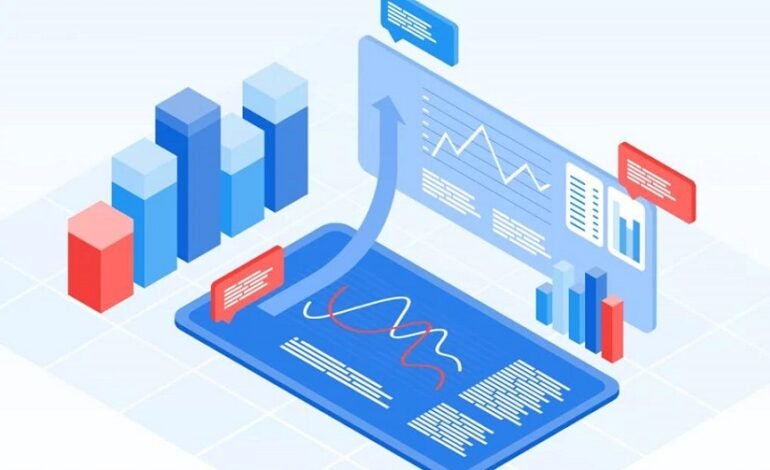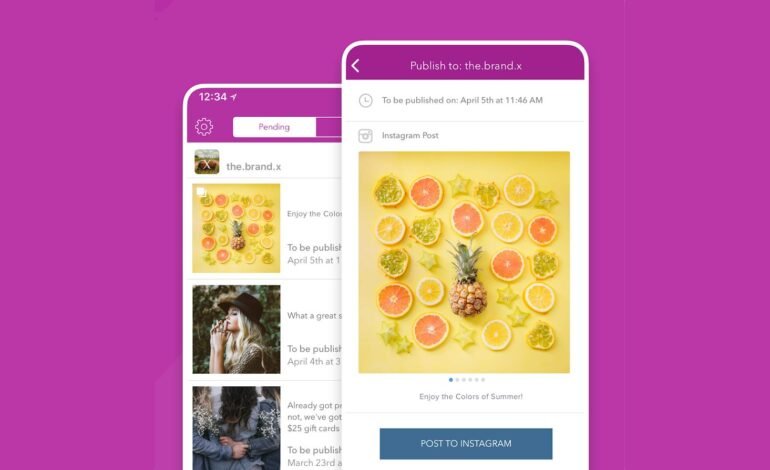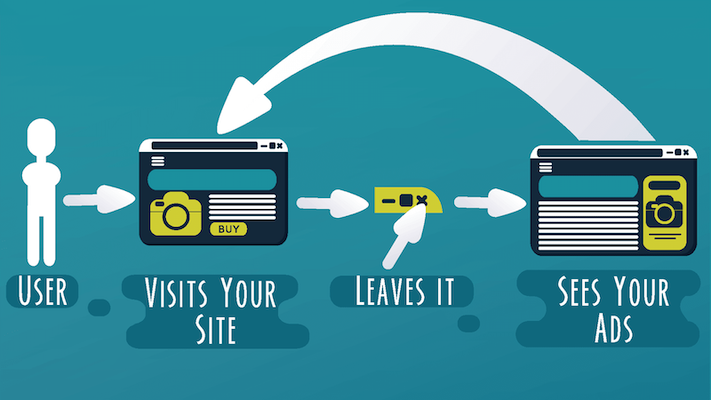Data analytics for inbound marketing: what metrics to look at and why

We spend our lives standing out. The importance of data analytics in Inbound Marketing.
We believe that it is essential to be able to measure what is happening in all our campaigns and that this measurement must be behind the strategy and decisions we make from the beginning.
But accumulating data without rhyme or reason does not help us either. Nowadays, we can measure almost everything, but that does not mean that everything interests us. We must avoid falling into “paralysis by analysis” and focus on obtaining the most important information and applying it to our strategy.
Therefore, in this article, we are going to see why Data Analytics is important in inbound marketing, what metrics we should be analyzing, and how to do it effectively. Started!
Why do we need data analytics in our inbound marketing?
- To make the most of the investment. If we measure the results of our campaigns accurately, we will be able to know where money is being spent and whether we are recovering the investment or not. We will also be able to establish which are the most effective actions and which are not worthwhile. Thus, we will progressively adjust our budget and become more and more profitable.
- To really get to know our potential customers. In the world of inbound marketing, we often create campaigns based on a mix of buyer personas, good practices, and intuitions. But until we get them up and running, we can’t really know what works and what doesn’t. But we can’t see the reactions of our users, and many times their feedback is limited to a few comments. Therefore, the way to really communicate with them, to know what they like and what they don’t, is to analyze the data about their behavior.
- To continuously improve our campaigns. Continuous improvement and learning (with its corresponding dose of mistakes!) is one of the maxims to advance in inbound marketing. Through controlled experiments and analysis of metrics, we can see which tactics work best with each target and adapt our campaigns to incorporate them.
- To detect errors. Even if we follow best practices when creating our website and other materials from online Marketing, there are always things that escape us: a poorly optimized form, a video that takes time to load, a button that does not work well on mobiles… When we implement data analytics, it often happens that we clearly see that a page is not working as well as it should. From there, we can analyze what is happening and correct the error that is negatively affecting the results.
- To communicate with clients, bosses, and colleagues. Having regular data analytics reports is a very valuable tool to inform us about what is happening in our campaigns. This way, it will be much easier for us to explain to the client what the budget is really used for, decide with the boss the next steps to take, or tell colleagues in other departments what we need from them.
The inbound marketing metrics you need to measure
As you already know, inbound marketing campaigns are usually divided into three phases: TOFU or top of the funnel, MOFU or middle of the funnel, and BOFU or bottom of the funnel. Each of them has a series of associated metrics that will help us know what is happening. Let’s see which are the most important at each stage.
TOFU Phase
In the phase TOFU, the user is in the early stages of the process: they have just recognized that they have a need and are considering solutions.
- Traffic: Every inbound marketing strategy starts with getting users to visit our website. But the raw number of views is only part of the story. To really understand web traffic, we need to look at the number of sessions, unique users, page views, session duration, bounce… All this will help us to understand how visitors behave on our website and whether we should take any measures to improve the quality of visits.
- Social Media Engagement: While it’s not easy to link social media engagement metrics to business results, that doesn’t mean we have to lose sight of them. Social media is a great channel to distribute our content and attract new users, and its health status is measured through impressions, clicks, and reactions of users.
- Incoming links: This is another “secondary” but important metric for evaluating the results of our SEO in Inbound Marketing. Inbound links not only attract visitors who click on them, but they are like a vote of confidence from other websites that helps us improve our organic positioning on Google.
- Conversion of traffic to leads: When a user leaves us their data, they become a lead and advance to the next stages of the conversion funnel. In fact, we could say that the main objective of websites within an Inbound marketing strategy is to generate leads. But not all leads are created equal: we need to distinguish between leads that we can discard, those that are qualified for marketing, and those that are qualified for sales.
Phase MOFU
e, he user is considering different ways to solve their need, among which is our brand.
- Lead quality and conversion rates: here we will study in detail what the proportion of each type of lead is and, above all, how they are progressing from one state to another. That is, how many of the users who leave us their data become qualified contacts for marketing, and how many of these become qualified contacts at the same time so that the sales team can start working with them. This way, we will advance step by step in the conversion funnel until we have users ready to buy.
- Email Marketing Metrics. There is room for many different types of campaigns in email marketing, each with its own metrics and different roles within the conversion funnel. But I have decided to place email marketing within the MOFU phase because of the great importance it has in marketing strategies. Lead nurturing. By sending regular posts to the contact base, we can convert leads into qualified leads for marketing and sales and guide them on the path to conversion. If this process isn’t working as it should, it might be time to take a look at our targeting strategy.
BOFU Phase
Finally, we have the phase BOFU, where the user is ready to buy
- Acquisition cost: once we have managed to convert the user into a customer, we will be able to know what the cost has been. To do this, we will divide the investment in the campaign by the number of customers obtained. Cost per acquisition is one of the most crucial metrics for the profitability of our marketing, so it is advisable to always be aware of it and look for ways to make it as low as possible.
- Sales increase: here we measure whether we have achieved the star objective of all brands, that is, “sell more”. With a good data analytics strategy, we will be able to see the entire customer journey from the first contact to the sale and know if our digital marketing campaigns are really contributing to increasing sales.
- ROI: closely linked to the previous two, this is the metric that tells us if we have managed to recover the budget invested. Here we can find a lot of useful information by analyzing the ROI of each channel or even each ad separately, to see which ones have worked best and redistribute our budget according to the results.
- Customer lifetime value: this is the metric that allows us to know if acquiring new customers is “expensive” or “cheap”, as it tells us how much we are going to earn on average for each customer. To calculate it, we need to know the average amount of a purchase and the times the user buys while they are a customer of the brand.
How to apply data analytics to your inbound marketing step by step
In the previous section, we have seen a lot of metrics that can be useful to measure the results of our inbound marketing, but we lack a framework in which to apply them to improve our results. So, let’s see a simple step-by-step method to improve our campaigns with data analytics.
1) Define a problem
First of all, you need to know what you want to achieve or what problem you need to solve. Only then will you be able to know what data you really need and in what context you have to analyze it. If you measure the wrong data or interpret it incorrectly, you’ll be reaching the wrong conclusions and getting off track.
Therefore, ask yourself what it is that you want to achieve. This can be a general problem, but you need to be able to tie it to a specific KPI, such as leads, sales, or conversion rate.
For example: “I think my website is not giving the results it should, and I would like to get more leads with it”.
2) Set data-driven goals
Now that you’re clear about what the problem is and what you want to achieve, you need a concrete, measurable goal to determine whether or not you’re achieving it. Goals and benchmarks (e.g., average conversion rate to leads in your industry or previous campaigns) give context to the data and help us interpret it.
We can set goals within a margin of error, for example, setting a first achievable goal, a more ambitious one, and a third that would be the ideal situation. Using these figures as a reference, we will know what and how much we need to improve.
Continuing with the example from above, we can analyze the data from our landing page. Thus, we see that one of them attracts a lot of traffic, but the conversion rate is only 1%. When comparing it to the rest of the site, we see that the best landing pages on our website get 5% conversions, so we decided to focus on improving the rate of this particular landing page instead of the overall web traffic. Based on these figures, we can set a minimum goal of doubling the conversion rate to 2% and an ideal goal of reaching 6%.
3) Collect data
In this phase, precision is critical. To reach the right conclusion and put the right measures in place, our data analytics tools have to be reliable and give us the data in an easy-to-interpret format.
To make this happen, we need to work hand-in-hand with the IT team to make sure we have all the plugins, pixels, tracking codes, and other tools installed. We also need to have an analytics platform (such as Google Analytics) that allows us to analyze the data we are obtaining.
4) Make informed decisions
Based on the information we have gathered, the time has come to start making changes. The most efficient way to work is to formulate hypotheses and experiment using A/B or multivariate testing.
For example, we might think that the landing page in our example would convert better if it had a shorter form and a product explainer video. To see if this is true, we’re going to test the changes one by one using A/B testing.
In the first test, we launched a version of the landing page with the shortened form, nd in another, we kept the original, directing half of the traffic to each of them. We see that the version with the shortest form manages to increase the conversion rate by up to 2.5%, so we stick with it.
Next, we tested one version of the new landing page with a video and another without a video. Once again, we see that we got it right, since the landing page with the shortest form and with Vida eo has managed to increase the conversion rate to 4%. Goal achieved!










